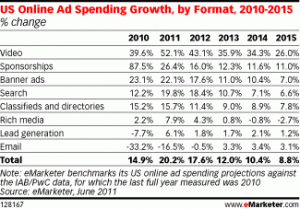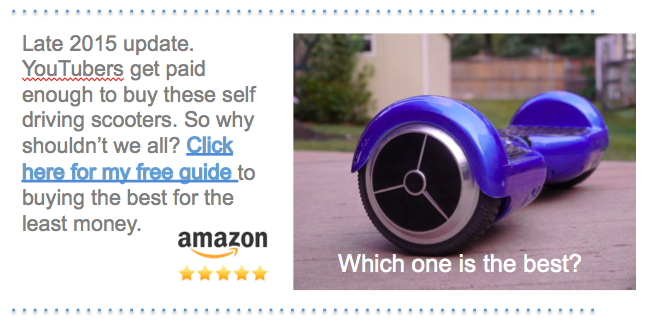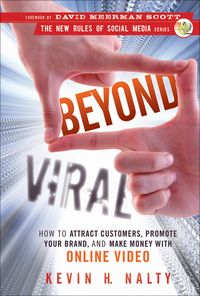
I’ve had a few requests from readers/viewers to clarify YouTube’s evolving Partnership program, and help “up and coming” YouTube creators understand how to make money via video. As always, I’d caution YouTube video creators to keep realistic expectations on earnings– right now there are hundreds of YouTubers earning six-figure income from YouTube. But the majority are earning small amounts, and the driver is daily/monthly views.
Below is some information about the evolving YouTube Partnership, and 9 additional ways to make money via video.
A YouTuber can expect to make anywhere from 50 cents to $5 on every 1,000 views. So a channel getting 1,000 views per month can maybe cover a cup of coffee. The bigger YouTubers like RayWilliamJohnson are making anywhere from $500K to $4 million a year (SocialBlade), and I’d guess it’s around $2 million. It’s a steep pyramid, folks.
So here are the ways to become a YouTube Partner, where you’re eligible for “revenue sharing” on your videos. Ads appear before and around your videos, and Google shares a percent (roughly 40% of what advertisers pay for those ads).
- Sign up to become a Partner on YouTube. Unlike previous years, most are granted Partnership (including my dog, FreddieNalts). In truth, this isn’t a full Partnership as we previously knew it. You’ll make a smaller amount of money because the ads are not exactly premium. YouTube has effectively changed the name of “monetize your videos” to Partner.
- If you’re getting tens of thousands of views per month, you could approach an Online Video Studio (OVS) to come a full-fledged Partner with advanced branding. You’ll need to share a percent of your earnings with the studio, but you’ll get some help resolving issues, and potentially some help building an audience. This type of Partnership also allows creators to customize their channel page and put a small icon over the videos that appear on “watch page.” This used to be available directly via YouTube, but YouTube is increasingly encouraging intermediaries to handle this process… remember Google doesn’t like to deal with people. It’s a technology firm, and isn’t resourced to provide personal attention to millions of YouTube creators. So becoming a full Partner can be accomplished broadly in two ways. First, you can sign with an “Online Video Studio” (OVS). In that post about web studios, I neglected to mention The Collective, which has helped a couple YouTubers (Fred, Annoying Orange) cross over to television.
- Finally for smaller YouTubers, there’s another option I discovered via Jason Urgo last night. Urgo/SocialBlade is helping smaller YouTubers (maybe 1,000 views per month) you can apply to become a Partner via Maker’s RPM Networks. The result is similar to option #2 but the bar is lower.
 Don’t think of YouTube ad revenue as your only source of income for video creation. Here are 9 other options for making money via online video:
Don’t think of YouTube ad revenue as your only source of income for video creation. Here are 9 other options for making money via online video:
- Create Commercials. If you’re talented and have high production capabilities (but don’t have an audience), you might join Poptent and create videos and commercials for brands… you’re not guaranteed to be compensated, but if a brand selects your video, you can make $5 or $10K.
- BYOS. If you have a large audience, you can pursue your own sponsor (bring your own sponsor- BYOS). Just call a company and see if they’ll pay for a custom video or some product placement. These are easier to get if you’re in a web studio/OVS.
- Get Free Loot. Call a company and see if they’ll send you free loot in exchange for your mentioning them. It’s not easy to find the right person, but I’ve been surprised how receptive companies are. They often have programs to reach online influencers, and if you have a decent audience… that includes you.
- Sell Your Stuff. This DailyFinance reminds us that artists can sell their stuff via video. Got something on eBay? You could mention it in a video, and see if you can get the video SEO-optimized so it might appear via a Google search.
- Sell your videos if you think there’s a market for them. Learn more here. I believe you need a Partners account to do this, and I wouldn’t count on this tool. Most people don’t purchase amateur video content, unless you count porn or Louis CK. I suppose there’s some “how to” video that’s worth buying, but I don’t see this as being lucrative.
- Drive to Website: you can try driving traffic off YouTube onto a website that allows you to sell loads of additional advertisements/sponsorships. It’s difficult to get people to follow a link of YouTube, and I’d estimate low single-digit numbers (depending on the reason). But Smosh’s “Smosh Pit” is a nice example of how YouTubers have created adjunct websites where additional monetization is possible.
- Affiliate Links: If you’re really cheesy, you can try making videos an inserting affiliate links into the description. I’ve never seemed to make anything notable via affiliate links on my blog and in a few links from a video.
- Merchandise: CafePress and other sites allow you to create your own branded merchandise and sell it to viewers. I think I’ve sold max. a dozen things on CafePress, but I haven’t put much effort into it.
- Get Rich Quick: Try one of the bullshit “get rich quick” schemes. Good luck.









